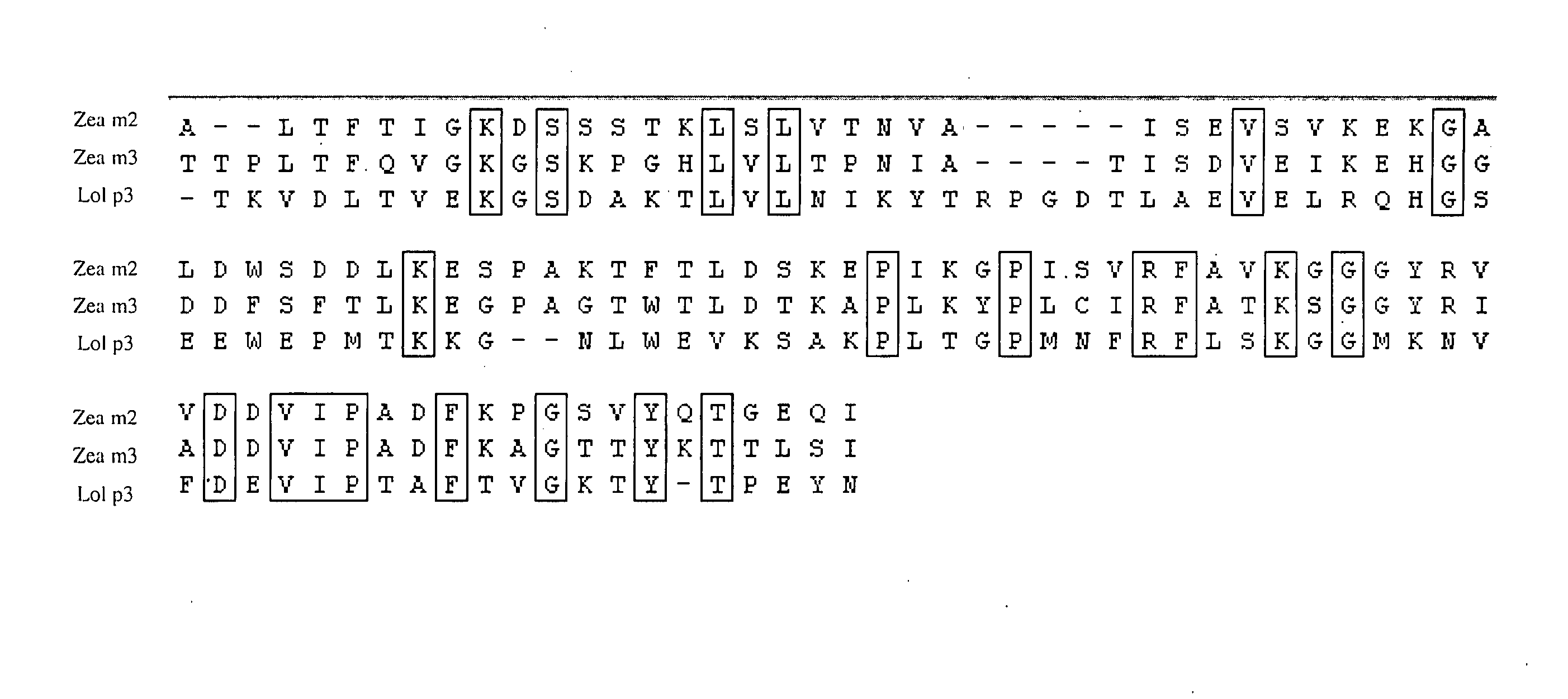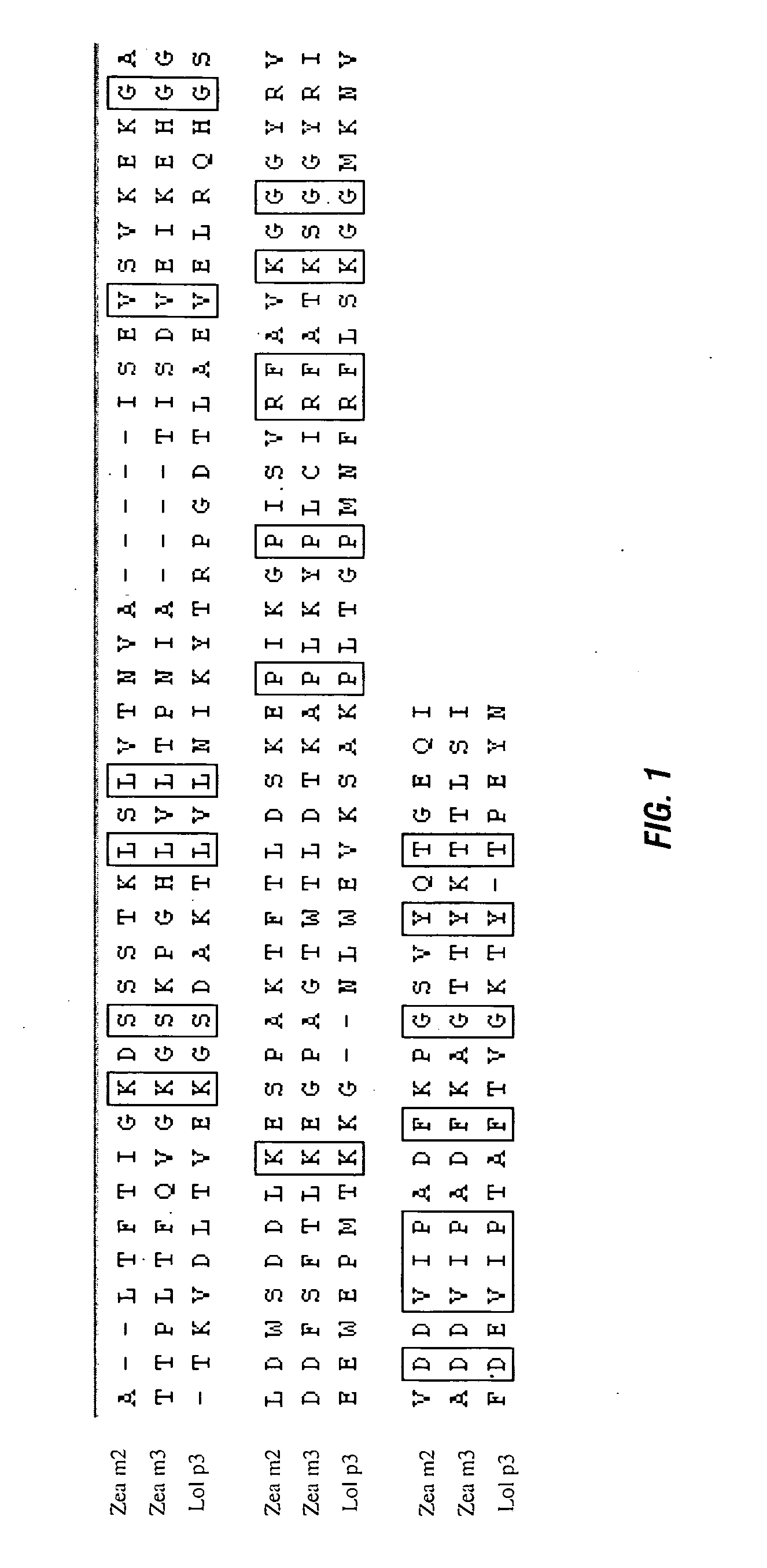Use of GR2 proteins to modify cellulosic materials and to enhance enzymatic and chemical modification of cellulose
a technology of cellulose and enzymatic modification, which is applied in the field of enzymatic and chemical modification of cellulose, can solve the problems of high cost, large limitations and limitations of ethanol production from cellulose, and the inability to enzymatically convert cellulose to simple fermentable sugars, etc., and achieves the effect of improving the accessibility of crystalline cellulose and improving the accessibility of the substan
- Summary
- Abstract
- Description
- Claims
- Application Information
AI Technical Summary
Benefits of technology
Problems solved by technology
Method used
Image
Examples
examples
[0111] Native GR2s were extracted from maize pollen and purified by chromatography, as described in FIG. 4. The GR2 band contains several GR2 isoforms named Zea m2 or Zea m3, according to the standard allergen nomenclature. The synergistic effects noted here were also found for HPLC-purified Zea m2 and Zea m3, which were >90% pure. In additional experiments (not shown), pollen from rye grass (Lolium perenne) was used instead of maize pollen, to purify a GR2 known as Lol p3.
[0112] Recombinant Zea m2 (abbreviated ZM2) and Zea m3 (abbreviated ZM3) proteins were produced using standard methods in E. coli by use of pET22b(+) expression vector constructed with cDNAs for Zea m2 and Zea m3. The endogenous signal peptide was removed in these constructs and replaced with a methionine. Sequence 1 shows the nucleotide and protein sequences for recombinant Zea m2 and Sequence 2 shows the nucleotide and protein sequences for recombinant Zea m3. The recombinant proteins were column-purified as in...
PUM
| Property | Measurement | Unit |
|---|---|---|
| pH | aaaaa | aaaaa |
| temperature | aaaaa | aaaaa |
| temperature | aaaaa | aaaaa |
Abstract
Description
Claims
Application Information
 Login to view more
Login to view more - R&D Engineer
- R&D Manager
- IP Professional
- Industry Leading Data Capabilities
- Powerful AI technology
- Patent DNA Extraction
Browse by: Latest US Patents, China's latest patents, Technical Efficacy Thesaurus, Application Domain, Technology Topic.
© 2024 PatSnap. All rights reserved.Legal|Privacy policy|Modern Slavery Act Transparency Statement|Sitemap



